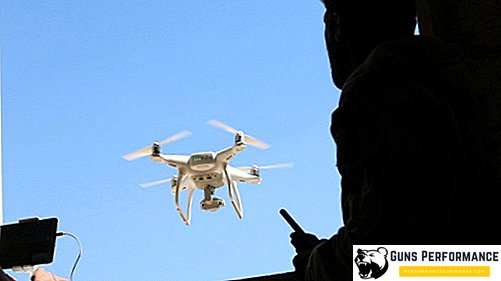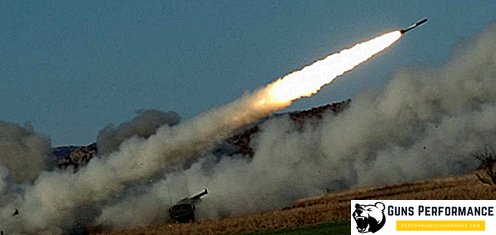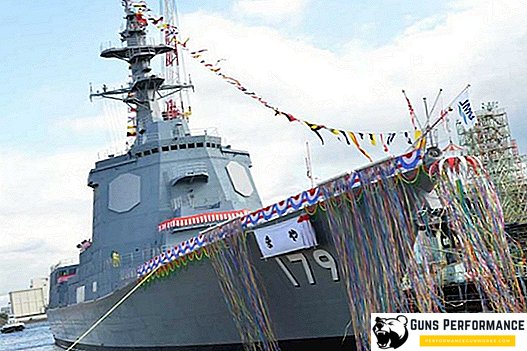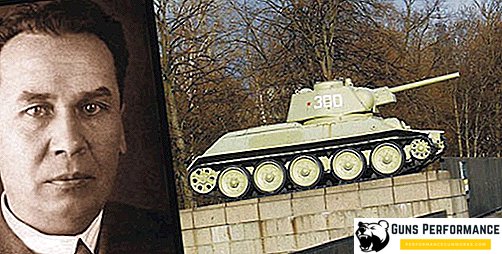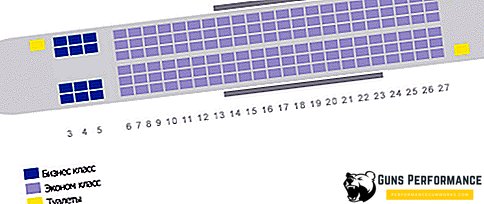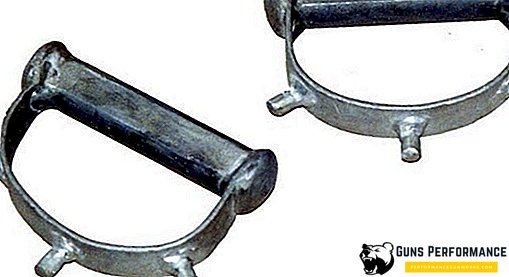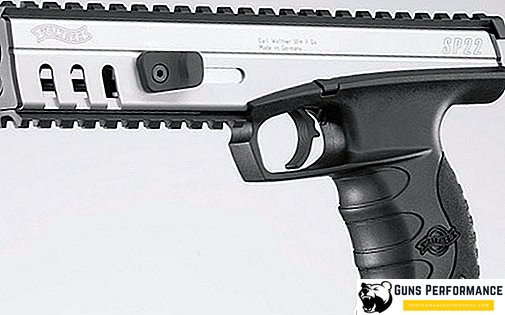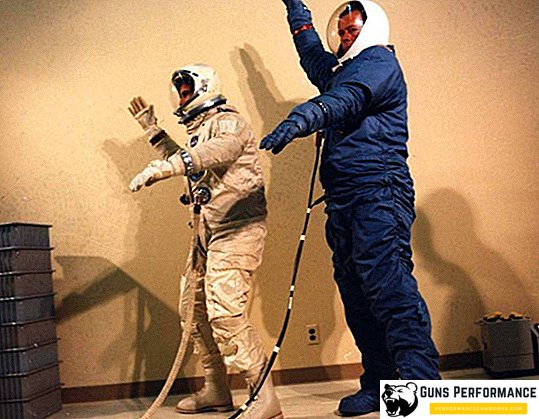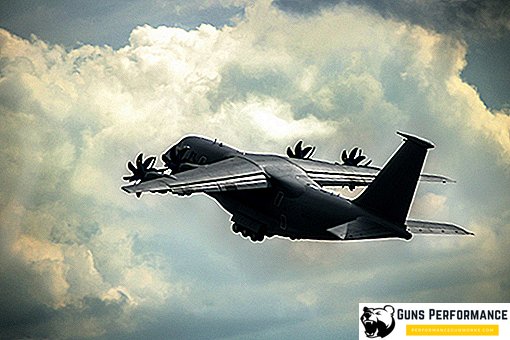ZIL-135 - a complex of military trucks, which were produced in the period of the Soviet Union, and also managed to capture the history of modern Russia. A distinctive feature of the transport was the four axles and wheel formula 8x8. The family was widely used in the military and civilian industries. The release began in 1963 and ended in 1995. Some modifications were made for export to other countries.
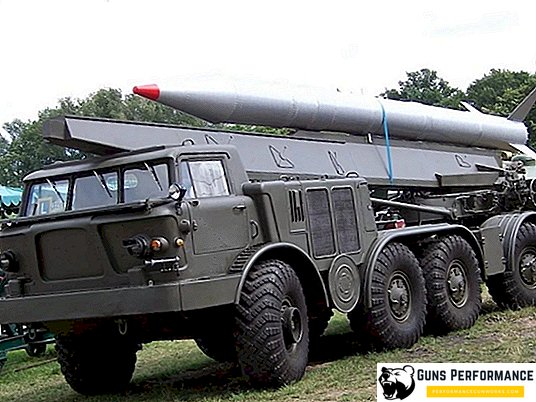
General information about ZIL-135
The initial construction turned out to be unusual and unique, in subsequent developments they repelled from it. The car ZIL-135 had two engines (120 horsepower). They were placed behind the cabin. The power unit was responsible for the rotation of the wheels of its side. This constructional decision increased the maximum service life of the vehicle and combat stability.
The first prototype was deprived of elastic suspension. This is caused by the presence of wheels with reduced pressure and the desire of designers to reduce the weight of the car. The lack of elastic suspension led to a significant drawback - a longitudinal swing appeared. In subsequent models, the developers returned an independent torsion bar suspension with hydraulic shock absorbers to the wheels of extreme bridges. The structure of the middle bridges remained unchanged - a rigid connection with the frame has been preserved.
The only similarity of all the family cars was the turning of the extreme axles. The remaining characteristics and parameters varied from modification to modification (dimensions, carrying capacity, ability to swim, etc.).

First options
The development of high-grade military trucks began in 1955 at the direction of the country's leadership. The first option was the layout ZIS-E134. It was based on a car from this factory with the index "151", but instead of the usual design it had four axes. It was planned to include in its device an engine of 130 horsepower, a torque converter, a hydraulic booster and a system for adjusting the pressure in lean-to tires.
In 1956, a second prototype was assembled, which was a low-profile military vehicle capable of navigation. For the latter, the water-jet system used on the PT-76 tanks was used. ZIS-E134 received a metal case, a power unit with 120 horsepower and two GUR on the steering mechanism. The sample was the first where the elastic suspension was abolished. The first tests showed the need to make changes - to make a pair of non-driving wheels spaced apart.

A big push in the development of special-purpose military trucks was the ZIL-134, the appearance of which remotely resembled the outlines of the 135th family. Of the two engines were the 12-cylinder engine with 240 horsepower. The addition was the presence of a unique hydromechanical suspension and independent torsion bar suspension of all wheels. The body of high-strength steel is protected from water ingress, can hold up to 4 thousand kilograms of cargo or eight people. Movement on water was carried out due to the rotation of the wheels, the maximum speed afloat - 2 km / h.
Immediately there was a modification with the index "A", which was used at the airfields. With the ballast loaded in the back, the transport could transport planes on the runway. Practical tests have shown a large number of flaws in the design of the 134th model, therefore, work on it was stopped after the appearance of the ZIL-135 vehicle.

ZIL-135 and B2
Testing of the first experimental images showed the main shortcomings and direction to development. Grachev decided that it was necessary to revise the concept of combat vehicles with an 8x8 wheel formula. The first car ZIL-135 appeared in 1958. The main feature was a streamlined cabin, due to which the movement on the water caused less difficulty.
For the cabin placed two motors for 130 horsepower each. The design included an onboard transmission with torque converters and a chain of gearboxes, which actuated an individual drive of the drive wheels and two water cannons. Two GUR responsible for turning the rear and front wheels in different directions. For correct controllability, the rotation of both pairs was carried out at the same angle. Capacity cars - 20-30 passengers. On an asphalt road, the maximum speed is 55 km / h, and on water - 10 km / h.

The development was intended for the installation of various missile equipment. In the design process, the engineering team forgot to take into account the stability of the sample when firing from the water. The first tests showed that after the launch of a rocket, the transport could roll over. The materials used in the production of the cabin required revision, as it was deformed under the influence of gases and flames.
In 1959, prototypes appeared with the index "B". They got an extended platform, and the engine power was reduced to 110 horsepower. The military leadership refused to test new products because of the poor quality of work with the guns afloat. An attempt was made to introduce a prototype "B2", which received a fiberglass cabin, but he preferred amphibians with steel hull.

ZIL-135E
In the spring of 1960, a land version of an all-terrain military truck was assembled, based on previous designs. Responsible for the movement of two power units ZIL-375YA, the power of which together amounted to 360 horsepower. The cabin consisted of 11 plastic panels that were attached to each other with epoxy resin. It is designed for the driver and two passengers. To protect the windows from damage, there were folding armored walls.
A feature of fiberglass has become "elasticity." Under the influence of high temperatures and powder gases after the launch of the rocket, it also, like the metal version, was deformed, but then returned to its original form.
The first prototypes were equipped with the Luna missile system. The test in combat conditions revealed a serious drawback - when moving, longitudinal resonant swaying of the body occurs around the middle axes. They tried to rectify the situation by introducing a speed limiter, but the experts did not recommend the country's leadership to use vehicles without suspension in service.

Car ZIL-135K and M
The 135K chassis also did not receive a suspension. It was based on a unique concept that did not give high power and terrain characteristics. The whole thing in the appointment of the machine - it was planned to use to install high-precision cruise missiles. Long trips from the complex were not required, so the technical aspects were relegated to second place.
Modification length - 11.4 meters. The technical units were separate parts interconnected by cardan shafts. The model is equipped with a sleek cab from 135E. In 1961, it was abandoned, making a choice in favor of a simplified version of fiberglass with an aluminum pan. Windshields have a reverse slope. This decision was made to eliminate the possibility of glare, which can reveal the location of the car ZIL-135.
The off-road test was excellent: the car passed pits with a width of up to 2.4 meters and climbed hills with a slope of 29 degrees. A trip along the highway showed old flaws: there were two zones of resonant vibrations, and at low speed the whole truck bounced monotonously.

Military leadership, despite the recommendations of military experts, like the new product. They were instructed to mount a missile system on the chassis for launching S-5 cruise missiles with warheads of various types. The leadership of the USSR also liked the car, so they made an instant order to assemble six copies. At the end of 1961, the 135K adopted the Union army. In the same year, the assembly was moved to a car factory in Bryansk.
In 1962, a team of experts proposed an improved version of the model "K", which received an index of "M". A prototype was used to install an anti-ship missile system. The length of the platform was reduced by a meter. Thanks to this, it was possible to increase the cabin. The new version contained a team of 5 specialists. New product testing and bug fixes continued until 1966.

ZIL-135L and LM
The model with the index "L" is the variant "E" with the corrected errors. Specialists introduced a torsion bar suspension of all the wheels into the design, thanks to which they have eliminated the galloping. In the spring of 1961, field tests of the new modification began. Initially, it was equipped with cargo ballast, but then it was changed to a model of the Luna-M missile system. After numerous tests, the military leadership of the country came to the decision that this truck met all the requirements, so they made an order to assemble four copies.
The serial production of the ZIL-135L was planned to be launched in Bryansk, but local specialists refused to assemble a truck with an automatic transmission. They required the introduction of standard mechanics into the device.

It took several months to replace a complex unit with a simpler one. In the spring of 1963, an option with a five-speed manual transmission appeared, which received an LM index. The box was supplemented with a remote drive for switching speeds. Experts assured the country's leadership that the installation of a mechanical box will lead to a decrease in technical and operational characteristics, as well as durability. The critics did not hear the opinion, so in the fall they wrote out a recommendation on the launch of the LM production in Bryansk.
The design team of the Likhachev plant did not agree with the decision to install a manual gearbox. To prove the best quality of their options, they conducted a series of practical tests at a gas pipeline facility in Central Asia and Tyumen. They showed that the modification of the LM is inferior in patency and quality of the original version. Despite this, the decision did not change. Further modernization of transport passed to the Bryansk Automobile Plant. At the end of 1964, a serial production of LM was established. In the future, trucks have received huge demand, performed numerous tasks around the world.

ZIL-135MSH
Modification of special purpose, not seeing serial production. Appeared as a result of work on a large space project. Soviet experts created the H-1 spacecraft. A big problem was its transportation from Samara to the Baikonur cosmodrome. Complex H-1 was divided into several blocks, the mass of each of which was not less than 10 thousand kilograms. The railroad was considered the best option for transportation in those years, but the rules for the transport of goods required the H-1 to be divided into smaller parts, which did not suit the project engineers.
The delivery was divided into two parts: a barge through the water to Guriev, from where the traffic began along the road. Project Manager H-1 put forward the requirement that the carrying capacity of vehicles must be at least 25 thousand kilograms. This option allowed to transport the third part with the installed equipment.

The prototype car was collected in 1967. He received a unique design. The wheel formula was defined as 4x4 + 2x2, which had not been seen before in automotive history. A pair of front wheels got racks with pneumatichydraulic shock absorbers that were used on some aircraft. This made it possible to change the height of the suspension during movement.
Minimum ground clearance - 1 meter. Each front wheel received an electric motor installed in the hub. Motor ZIL-375 had a volume of 7 liters and developed up to 180 horsepower. Transport could accelerate to 20 kilometers per hour, which exceeded the performance of similar variants of the time. The steering mechanism allows the front wheels to rotate 90 degrees. This determined the high maneuverability of the machine of such dimensions. For the manufacture of the cabin used fiberglass, it carried out of the wheelbase forward.
After the end of the necessary tests, the management of the MS project was transferred to another person who decided to stop work. He believed that the transportation of H-1 in the desert is dangerous. Therefore, for transportation chose more expensive and uncomfortable options. The car was put on the back burner, information about it appeared in 1976 as part of a platform project with hydraulic suspensions of the supports of the French company Nicolas.

What can be concluded?
Car ZIL-135 - one of the most successful and secret developments of the Soviet engineering. It has benefited not only the Soviet army, but also units of many countries of the world. Chassis used in many combat operations. High quality is proved by a long term of release - more than 30 years.


